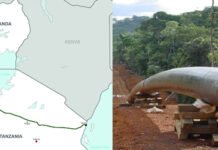
Telemetry for Pump Management is a solution that allows you to be aware of the status of your pump systems and to start and stop them remotely. Remote monitoring and control reduces labor, improves maintenance and enhances your ability to react to changing conditions.
The current crisis of sewage pollution and lack of maintenance of water and sanitation systems in the Vaal River has highlighted the need for intelligent, pre-emptive systems and measures to protect South Africa’s precious water and other natural resources. The internet of things (IoT) could be the answer.
Forward-thinking industries like mines, farmers and local municipalities are now able to use real-time, secure, cloud-based SCADA (supervisory control and data acquisition) technology to gain control over their operations anywhere that has cellphone, WiFi or Ethernet connectivity.
The situation in the Vaal was originally blamed on lack of funding needed to perform the required maintenance on the water purification systems. But after further inspection, the Parliament’s Portfolio Committee on Water and Sanitation recommended that government use technological developments in the sector to find ways to reduce infrastructure development costs.
READ: ERWAT to spearhead the Vaal river clean up
The use of telemetry (automated processes of remote measurement and data collection) has shown success in managing and pre-empting maintenance needs for water, sewage, agricultural and energy operations, but the development of cloud-based telemetry presents a further level of control, cost-savings and capability.
The catch? Well, it requires a mindset shift.
In today’s competitive business environment, there is no margin for error or delays. To save costs, improve efficiency and avoid disasters, operations that manage water treatment plants need integrated fault detection, reporting, monitoring and management systems that will proactively give them the visibility they need to troubleshoot, resolve issues and regain control – within the shortest time possible.
The traditional definition of telemetry implies the use of special equipment to take specific measurements of something and then to transmit those measurements elsewhere using radio transmissions. There is a connotation here of remoteness, distance, and intangibility to the source of the telemetry.
Cloud-based telemetry is the anthesis of remoteness in the sense that it brings business-owners closer to their business from wherever they are. For example, data is key to successfully managing and optimising a purification plant and in modern telemetry, IoT allows chief operational officers to connect disparate information from multiple pieces of equipment into an integrated ecosystem, from almost anywhere in the world in real-time.
But can it work in South Africa? In a case study from a US pumping station it seems it can.
READ: Poorly maintained pumps, another cost source for mines
Case study
A pilot project was carried out at American Water’s (AW) Innovation Department as part of the company’s strategy of constantly improving and increasing the efficiency of the water and waste disposal systems it operates.
For the pilot, two Environmental Disposal Corporation (EDC) facilities were connected to demonstrate RealiteQ System’s capabilities and its compatibility with American Water’s needs, to allow the subsequent connection of the various remaining Water Company facilities to this system. This resulted in the command and control of all the corporation’s facilities being managed by a single system.
The EDC featured various facilities spread out over a fairly large geographical area. It ranged from sewage pumping facilities, through a waste treatment and purification facility, to a system for discharging the treated waste into the river.
The vast majority of these facilities were not equipped with telemetry devices and were not connected to a comprehensive SCADA array. Therefore, no command and control existed for the various facilities and tracking their function and operation was complicated.
As a result, the customer defined a need for an advanced system that could connect all the sites to a single command and control array, quickly and at low cost.
The results
A cellular telemetry system and cloud-based integral SCADA saved the cost of installing software or applications, while allowing an unlimited number of approved users to connect to the system (subject to their authorisation level) from any device (computer, tablet, telephone).
The system installation was considerably faster than that of traditional SCADA projects. It involved connecting both sites, (including splitting measurements using analogue and discrete distributors) and wiring them to the relevant field instrumentation. The total time it took the systems engineer was six hours.
READ: IoT system to monitor performance of water pumps
From the moment physical installation was completed, data began to gather in the cloud database, and the system’s functioning could be viewed in real time. Beyond the display of the facility’s real-time operational data and saving their history, effective dashboards were defined in the cloud management portal.
The operation and maintenance personnel observed a large amount of data and could, each according to their own authorisations, perform different actions in the system. The system operators found it easy to operate and installation costs together with the regular operating costs remained low.
Furthermore, ongoing maintenance is unnecessary as the system is continually being managed and it remains a part of the service.
Conclusion
When it comes to the management of our water resources in South Africa, there are various legacy factors at play, some political and others practical. The old adage: “Prevention is better than cure”, seems to be most appropriate in this case, as local municipality and government scramble to deal with the aftermath of the spillage crisis.
Employing an affordable cloud-based telemetry system seems to be indispensable to the way South Africa manages the current challenges and to avoid incidents going forward. Since these systems are quick to install and do not require large capital expenditure on equipment and software, this could be a quick first step for South African organizations with extensive monitoring needs towards taking corrective measures and gaining control over operations.
Big corporates are also taking notice of the cost-saving effects of installing these systems.
The applications for businesses do not only apply to water management systems. The opportunities are endless in the areas of increasing the efficiency of cooling towers, industrial and agricultural desalination systems, remote supervision and control of irrigation systems, solar energy fed communication base management, production line efficiency and security in natural gas infrastructures.
The real question is not, “Will it work in South Africa?”, but rather “Will South Africa listen?”
ALSO READ: Measuring abrasive slurry density the smarter way



